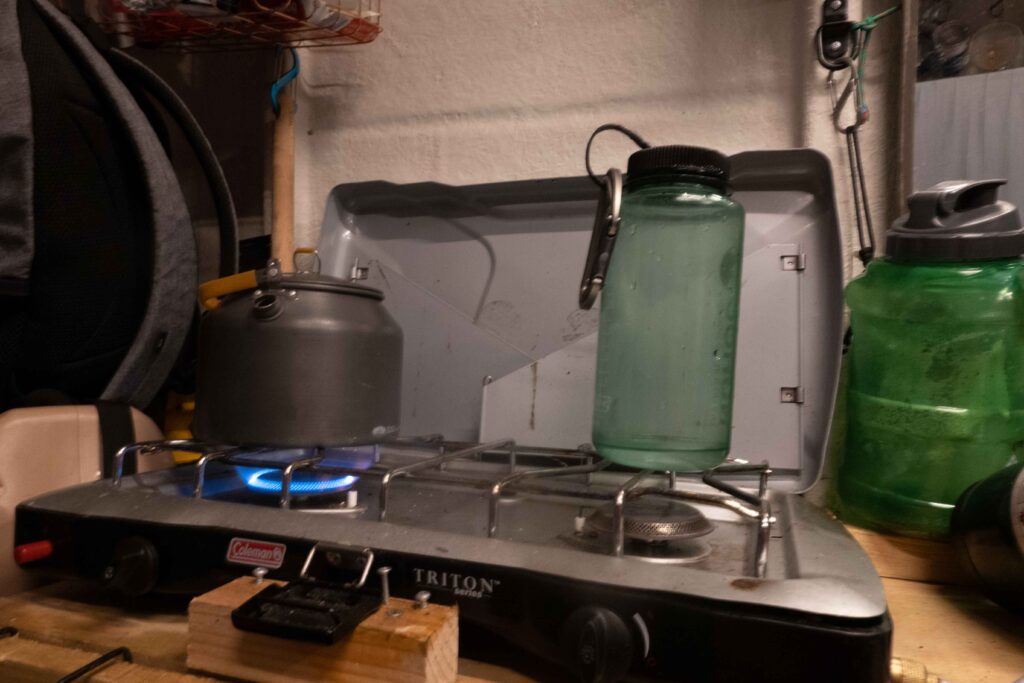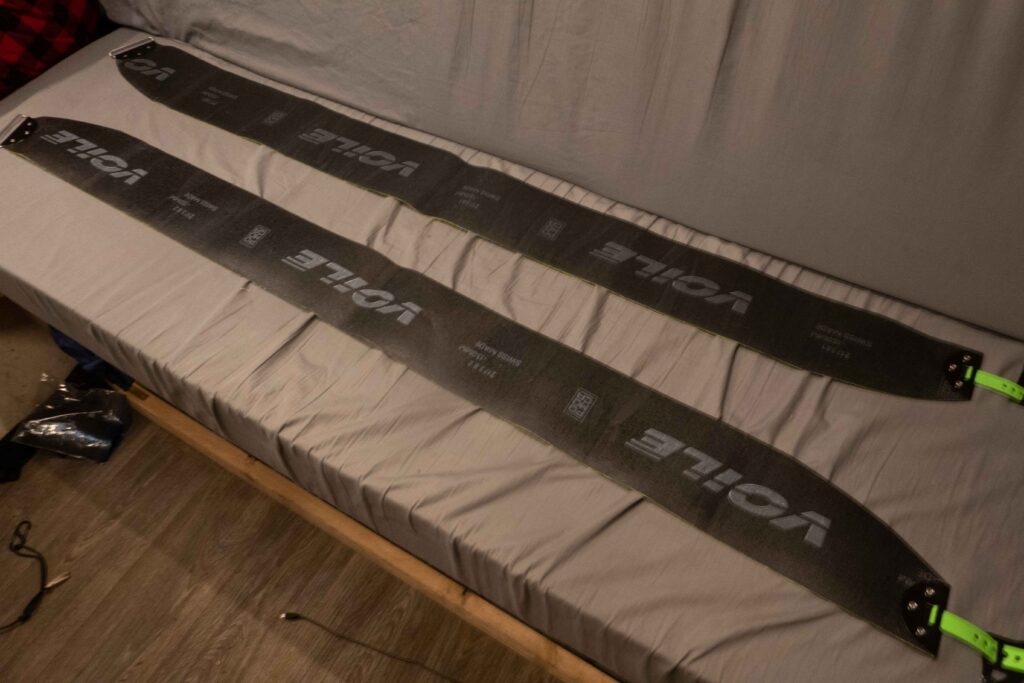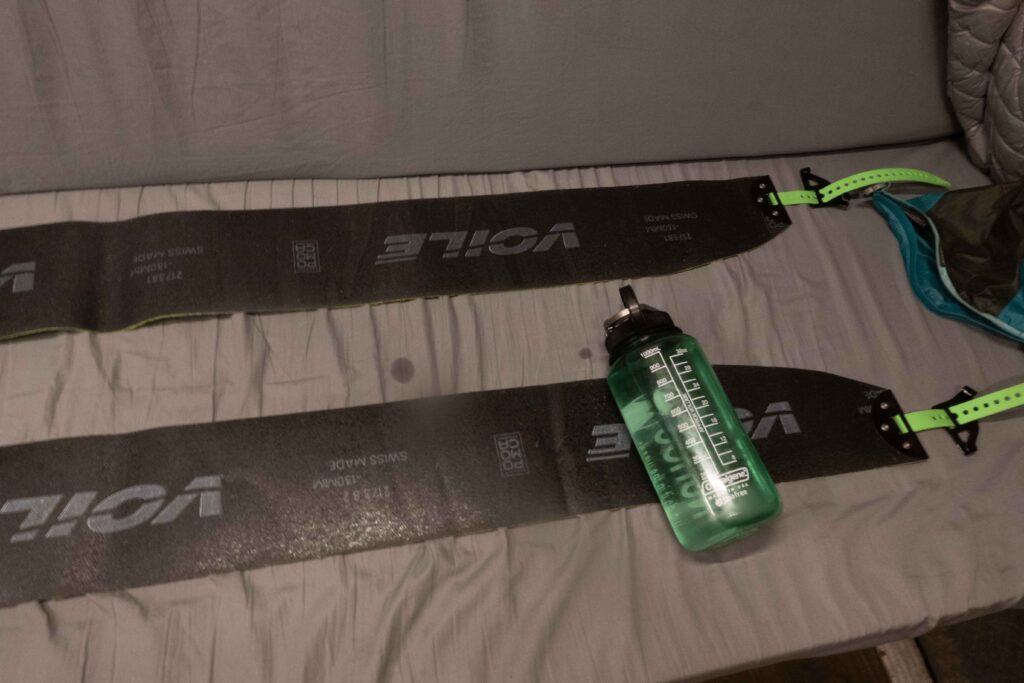There are few things more annoying than dealing with skin problems on a backcountry ski or splitboard tour. Skin glue loses its tackiness over time. This is either due to water contact, contamination, improper care, age, or sheer usage. The traditional method to refresh skin glue involves laying parchment paper on the glue and running a waxing iron over it. That will heat up and rejuvenate the glue.
You can accomplish the same with a Nalgene and hot water. This method is invaluable in the field — unless you tour with a waxing iron and a generator. It’s also great if you’re lazy, prefer simplicity or don’t have a waxing iron and parchment paper handy.
Before beginning it’s best to remove contaminants from the glue with a tweezer or similar tool.
Start by boiling a liter of water. After the water boils, pour it into your favorite Nalgene.

Next, lay out your climbing skins on a flat surface — or the closest to flat you can get.

Ready your hot Nalgene. Slowly roll it across the skin in order to heat up the glue and revive it. Boiling water is cooler than the temperature of a wax iron, and the plastic is less conductive than metal. This means it’ll take more time to heat the glue to a sufficient temperature. For my skins — which weren’t too bad — I did three passes per skin, taking a minute or two per pass. I also spent extra time on troublesome sections of the glue.
The heat will also let you remove stubborn contaminants more easily, so have your tweezers nearby.

When you’ve finished, don’t fold your skins back together yet! Hang them somewhere to let the skin glue cure. My glue didn’t need much heat to revive, so I let it hang for four hours. Other sources with the wax-iron method say 24 hours, so use your best judgment. If in the backcountry, overnight in your tent should be sufficient.

